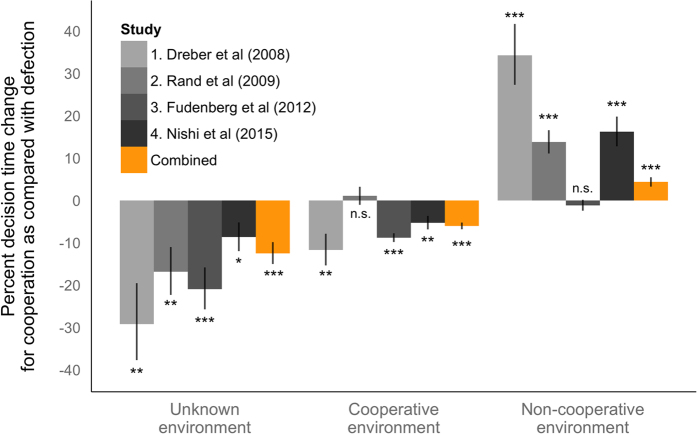Figure 1. Cooperation is faster than defection in an unknown social environment and in a cooperative social environment, while defection is faster in a non-cooperative social environment across four studies of repeated economic games and in the combined data.
The percent change in decision time for cooperation as compared with that for defection is calculated by regression analysis using random intercepts models that account for the hierarchical data structure (studies, sessions, individuals, and decisions). Left, the results in the 1st round, in which subjects are in an unknown social environment and do not know if neighbors are cooperative or not, are shown. Middle, the results of cooperative social environments in later rounds (≥2) are shown. Right, the results of non-cooperative social environments in later rounds (≥2) are shown. A cooperative social environment is defined as cooperation rate of interaction partners at the last round of 0.5 or more, while a non-cooperative social environment is defined as that of less than 0.5. Error bars, point estimate ± standard error. n.s. for P ≥ 0.05, * for P < 0.05, ** for P < 0.01, and *** for P < 0.001.

